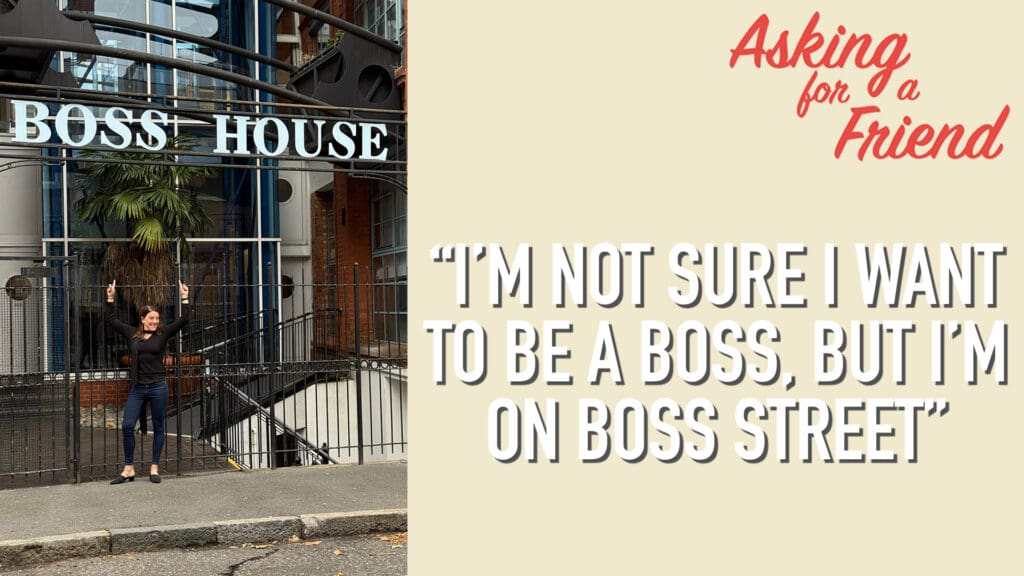Do This, Not That For Better Team Email Communication
When you’re working in a remote or hybrid team, having a common agreement on your email best practices will save you gobs of time and frustration. Start with subject lines that tell the reader exactly what you need from them and when. Talk about who it makes sense to cc, and when. Create team norms for when to ditch the email and send a text for a quicker response. And, of course, ensure everyone knows when to pick up the phone or schedule a meeting for deeper conversation and decision-making.
In this article and the video below, I share some of the biggest challenges that derail email communication and best practices to prevent them.

5 Email Best Practice Tips For Teams
- Create a subject line protocol that tells your reader exactly what you need them to do
- When it comes to email less is more: Summarize, synthesize, and use bullets
- If the topic is complex, contentious, or emotional pick up the phone or schedule a call
- CC to share information, not for escalation
- Slow down and read what you’ve written
And Avoid These Mistakes
I’m going to assume you’re way past email blunder basics: replying to all with snarky remarks, sending the note intended for your partner to your boss, or emailing when you’re angry, or after that second glass of wine.
Here are a few common email mistakes to avoid.
Mistake #1: Cryptic Subject Lines
The biggest frustration I hear from nearly every team I work with is cryptic subject lines.
- “I shouldn’t have to read three-quarters of the way down an email to figure out what it’s about!”
- “I just wish the subject line would tell me what I need to do by when!”
- “Sooo….I woke up this morning to fifteen emails that all just had the subject line that read ‘update.’ I have no idea what kinds of updates, so I have to read them all to figure out what they are about. I’m so busy today and I have no easy way to prioritize my attention.”
Email best practices tips for teams #1: Create a subject line protocol that tells your reader exactly what you need them to do!
Mistake #2: The Barrage Effect
Early in my Verizon days, I was preparing a very senior leader for an impromptu meeting with the CEO on an important subject she knew little about, and the situation was evolving rapidly. I wanted her to be as prepared as possible, so I went through my inbox and forwarded the relevant information one email at a time.
One email had data, the other trends, the other some commentary that would give her a sense of the political landscape. I carefully commented on each one to explain the context and forwarded it to her.
The phone rang. “Karin, I’m searching my inbox for your name and deleting everything that’s come from you. Now I want you to send me one email with concise bullets I can share at this meeting, nothing else. It would take me hours to dig through all of this and figure out what is going on.
Email best practices tips for teams #2: When it comes to email, less is more. Summarize, synthesize, and use bullets.
Mistake #3: Your Email Should Be A Phone Call
Has this ever happened to you?
My peer sent me an email. I wasn’t quite sure what he was saying, but it was REALLY ticking me off.
I filled in the blanks of my confusion with assumptions. He returned the favor. We went back and forth three times before we got to the root of the matter. We could have easily spared one another the frustration and misunderstandings if one of us had picked up the phone.
Email can feel easy and less disruptive than a phone call, but often wastes time and drains energy.
Email best practices tips for teams #3: If the topic is complex, contentious, or emotional pick up the phone or schedule a call.
Mistake #4: Too Many CCs
I could feel my direct report’s anger burn through the phone. “Why did he cc you on this email? I’ve got this! I’m not cc-ing HIS boss!” To the manager working hard to resolve this situation, this felt like an unneeded escalation.
Be sensitive to who you’re copying on a note and why. If you wouldn’t draw them into a meeting or phone conversation on the topic, you may want to think twice. Even better, establish norms of who will be copied on project emails.
Email best practices tips for teams #4: CC to share information, not for escalation
Mistake #5: Sloppy spelling and grammar
My phone rang. It was the head of HR “Karin, how could you recommend this guy for a senior role? I know you say he’s good, but let me forward the email he sent along with his resume.” I was shocked at the grammatical problems: “there” instead of “their” “to” instead of “too.” This guy’s a great leader and knows grammar, but he was moving too fast. His excited response cost him the job and embarrassed me for recommending him.
Email best practices for teams #5: Slow down and read what you’ve written
The most important email best practice is to talk about it as a team. One good “how we could do things around here” conversation can save hours of lost time.
See Also: Stop Emailing When You Should Have a Meeting
And if you’re ready to accelerate team performance for breakthrough results while improving communication, connection and trust…check out our team development program Team Accelerator.









Great article Karen.
Several times in my 30 plus year career I have been asked to cc an employee’s manager on emails I ask a fellow employee to provide me an update on. These request usually come o the back of my letting the employee’s manager know they are having difficulty on follow up. The employee many times asks me….”Why did you copy my manager!” I myself have even been the recipient of emails where my manager was copied….ugh! In my mind, this could all be better handled by a discussion with the employee’s direct report about job performance concerns or challenges they see the employee having.
Any suggestions?
John,Thanks so much for expanding the conversation! This is a perfect example of 1) not having clear norms for ccs– OR having clear norms, but not following them when there are performance challenges and 2) using the cc instead of having candid conversations about performance issues. I totally agree with you, that these situations beg for clear expectations and an I.N.S.P.I.R.E. performance conversation. https://letsgrowleaders.com/2021/02/11/how-to-provide-more-meaningful-performance-feedback/
Great tips, Karin. I find a lot of the cc’s are simply thoughtless – perhaps the bad habit of clicking on “Reply All” when “Reply” would serve the purpose. I dread emails sent to large groups where I’m on the mailing list because then there’s a barrage of responses indicating some version of “Noted, with thanks.” that I didn’t need to spend time opening/reading.
Brian, Thanks for expanding the conversation! Oh, yes, the dreaded reply to all with a “got it.” ugh.
Karin – thanks for the great advice! The use of a telephone conversation instead of an email or text when appropriate would counteract the dehumanization of our culture and improve interaction with business associates, friends, and family. Also, effective use of the subject line is a biggy for me. I frequently get emails back with questions that are completely different than what was in the initial email and with the same subject line.
Don Casse, President/COO
HUB Soccer of Denville, Inc.
Thanks, Don. I so agree with you. A phone call can often save time AND create a deeper human connection. You raise an important point here about adjusting the subject line as the conversation evolves. That’s a FANTASTIC addition.
Fantastic article! I just retired from the Navy, and we used a term BLUF, which is Bottom Line Up Front. The first line in the email would state the overarching summary or action required with bullets or additional details that followed.
There are those who use email to capture complete conversations with every detail in narrative form, but the majority will get lost in all the verbiage and miss the key points. I’ve also seen a “+ John, Sally, etc.” at the top when people respond to a group and add others to the string, which is courteous and ensures transparency.
Also concur that adjusting the subject line is a great idea!
Thanks, Kim! Oh, I love that… BLUF… great addition. Also really like the transparency of who is getting added along the way. Really appreciate you expanding the conversation.